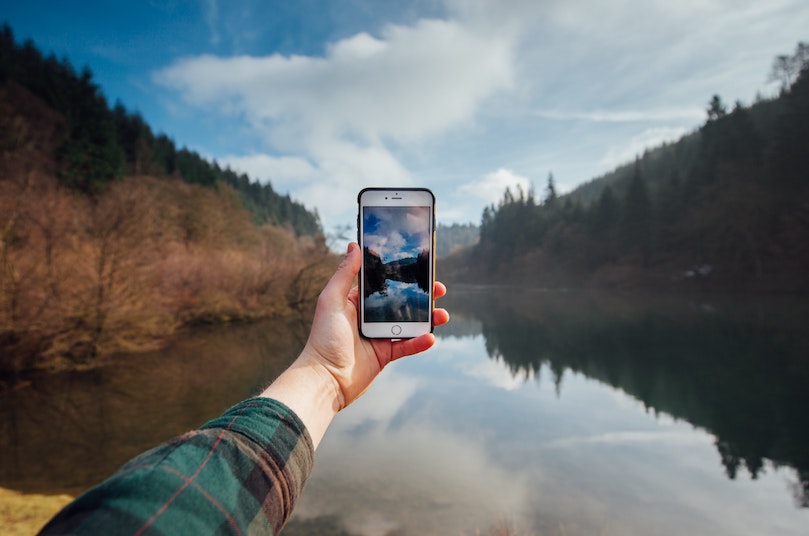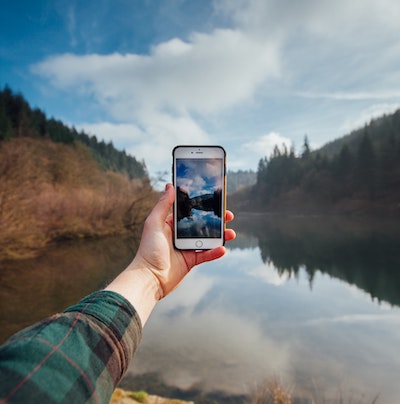
I like to think of myself as a disciplined person. After five years of therapy, I can pretty happily get my work done, show up on time, work out, eat healthy, brush my teeth — you get the idea. But there’s at least one area of my life I know could use a little work: screen time.
Recently my partner asked me if I could be on my phone less; he felt like I was rarely giving him my full attention. I did not respond well. “I work for an app! I have to be on my phone!” Just the fact that I reacted with such defensiveness should’ve been a clue, but even for those of us semi-beholden to our devices, there are ways to see if we’re the ones in charge, or if our phones are the ones in charge of us.
First, a few quick estimates:
- How many times do you think you pick your phone up a day?
- OK, and how much time do you think you spend on your phone a day?
These stats are all available in our phones. And sometimes they can be a little startling.
The point of knowing these numbers is not to feel bad, it’s simply to know where we’re at. If you’re keen on changing your relationship with your phone so you can be more present, get more done, or just have more brain space, there are plenty of tips and tricks to help you get there. Let’s run through a few of them:
1. Limit your time on certain apps. When I first started to change my phone habits, Instagram was my biggest problem. I went into my Screen Time settings and set a daily limit on Instagram of one hour. This seemed like more than enough, what could I possibly be looking at Instagram for that long? Turns out, a lot! I was hitting that hour limit by 11am most days, which I find incredibly embarrassing to type! And trust me, there were many days when I snoozed the hour limit reminder, and many more when I ignored it completely. But it helped me see that I had a bad relationship with Instagram — and that was a good start.
2. Set your phone to grayscale. Setting your phone to grayscale changes everything from color to shades of gray. Part of what entices us to our phones are the colors. Opening your phone is like walking into a casino or a mall or an arena. There’s so much to look at! Pretty! Changing it to shades of gray? It makes everything, well, gray. And it makes the ooooohs and ahhhhs diminish, helping you put down your phone and do something else.
3. Tell yourself why exactly you’re picking up your phone. I know this one sounds a little silly, but pausing before we grab our phone to acknowledge why we’re grabbing our phones helps us realize that sometimes, we’re grabbing them for the wrong reasons. The key here is to be honest. Don’t say, “I’m curious if someone sent me a message,” when the real reason is, “I’m hoping someone cool sent me a message because I’m bored and could use some attention.” (Not that I deeply relate to that one or anything…) I usually follow-up this up with a post-phone-pick-up report, which means I assess what value I got from picking up my phone. The value is usually negative. Nothing of note on Instagram, another celebrity disaster on Twitter, and promotional emails for things I don’t need.
4. Set no-phone times. If you wake up at 7, don’t look at your phone until 8. If you go to bed at 11, stop looking at your phone at 10. Whatever it is, set parameters. And if you keep feeling that itch to check, then definitely stick to the parameters. That’s what they’re for. And by protecting post-sleep and pre-sleep time, you’ll be healthier and happier.
5. Make your notifications work for you. For some of us, this means turning notifications off. You don’t need to know immediately every time Xbox Live sends an email. Nor do you need to answer every single DM as soon as they come in. In my case, I was uselessly checking Instagram every hour “just in case” someone messaged me, so I actually turned message notifications on. Then, I would pick up my phone, look at the screen and see no notifications and tell myself, “there’s nothing for you here, put it down.” Do some journaling or self-exploration to figure out what you’re going to your phone for, and then work from there.
The whole idea behind reducing screen time is so we can be happier. There are countless articles and studies on how increased screen time has made us all increasingly miserable. All screens have uses, and there’s no getting rid of them, but relying on them too much for distraction actually makes us more anxious and more stressed.
If you’re struggling with your screen time, don’t beat yourself up. When the content team at Sanvello got together to talk about what we wanted to help people with in October, we started by talking about what we personally needed help with: getting off our phones. They’re made to be addictive, and despite the irony of an app on your phone telling you to put down your phone, we know that many basic mental health techniques can help: meditation, journaling, therapy, thought reframing, and more.
So the next time you pick up your phone without thinking, either put it right back down, or open a meditation. If you can’t beat it, treat it.

By Kelton Wright Vice President Content, Strategy and Production at Sanvello
Kelton is an author, editor, and athlete passionate about helping people live happier lives. She’s taught mindfulness to NFL coaches, led hundreds of women through cycling clinics, written an Amazon best seller on dating, and worked with brands like Runner’s World, Rapha, Headspace, Teen Vogue, Bicycling Magazine, Thrive Market, Skratch Labs, Peloton Magazine, and more all with the mission of empowering others. She is currently the VP of Content, Strategy, and Production at Sanvello. Follow her on Instagram: @keltonwrites.
